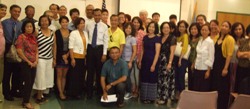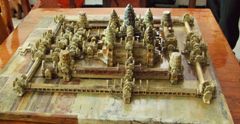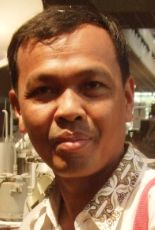Banteay Srei
Citadel of Women. Citadel of Beauty
by Ben Bao
- History
- Rediscovery/Restoration
- Foundation
- Jewels of Khmer Arts
- Enclosure and Gopura
- Libraries
- Sanctuary
- Photo Gallery
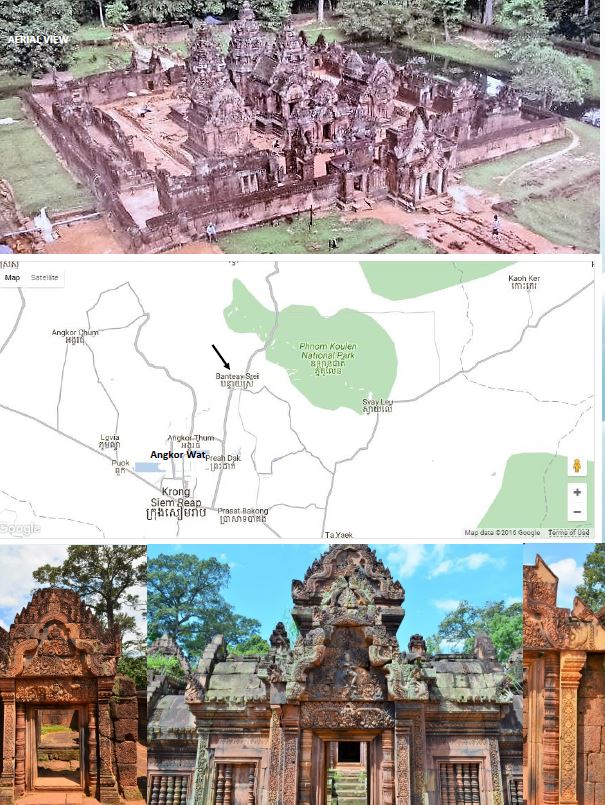
Located just outside of Angkor Archaeological Park, 37 kilometers (about 23 miles) northeast of Siem Reap town, Banteay Srei is one of the renowned temples of Angkor era. It is considered a “Jewel of Khmer Art” for an intricacy of its carvings. It was built from pinkish hue sandstones, some of them are the finest stone on earth easily carved as wood. It is small in size, compared to other Angkorian temples. However, lacking in size is quite compensated with its stature, beauty, and its well-preserved carvings, some of them are 3-dimensional. Banteay means fortress and is usually surrounded by a moat for a strategic defense. At Banteay Srei, there are moat at the north and south sides and partly on the east.
History
Banteay Srei was completed in 967 A.D during a time when the Khmer Empire was gaining significant power and territory. Unlike other Angkorian temples that usually built, consecrated and commissioned by a king, it was built by a Brahmin named Vishnukumara who served as a counselor to powerful King Rajendravarman (ព្រះបាទរាជេន្រ្ទវរ្ម័ន) and a nobleman named Yajnavaraha who was a grandson of king Harsavarman I. He was a scholar and philanthropist who helped people with illness and fought injustice and against poverty. One of his pupils later became king (Jayavarman V, 968-1001). The temple was further expanded and rebuilt in 11th century. It was dedicated to Hindu god Shiva at the time it was built. Later, it became under control of the king and the dedication had changed (may have changed to Hindu god Vishnu as evidences suggested). A 12th century inscription indicates that the temple was given to a Hindu priest named Divarakapandita, and that the temple was rededicated to Shiva and was remained in use until 14th century. Banteay Srei (a citadel of women) is the modern name as it is believed by many that is was built by women. The original name is Tribhuvanamaheśvara (Great Lord of the Threefold World), an appellation of god Shiva.

Rediscovery/Restoration
The temple was lost in the jungle during the Cambodia dark age era and was not rediscovered until 1914 by a French archaeologist in his late research. The site was subject to looting afterward. In 1923, André Malraux, a Frenchman was arrested for stealing four statutes of devada which all have been returned. The art thefts from the area stipulates interest in preserving the site. In 1930, Banteay Srei was restored using architectural elements as close as possible to the original one.
Between 2000 and 2003, a joint Cambodian-Swiss Banteay Srei Conservation Project installed a drainage system to prevent further damages to the site.
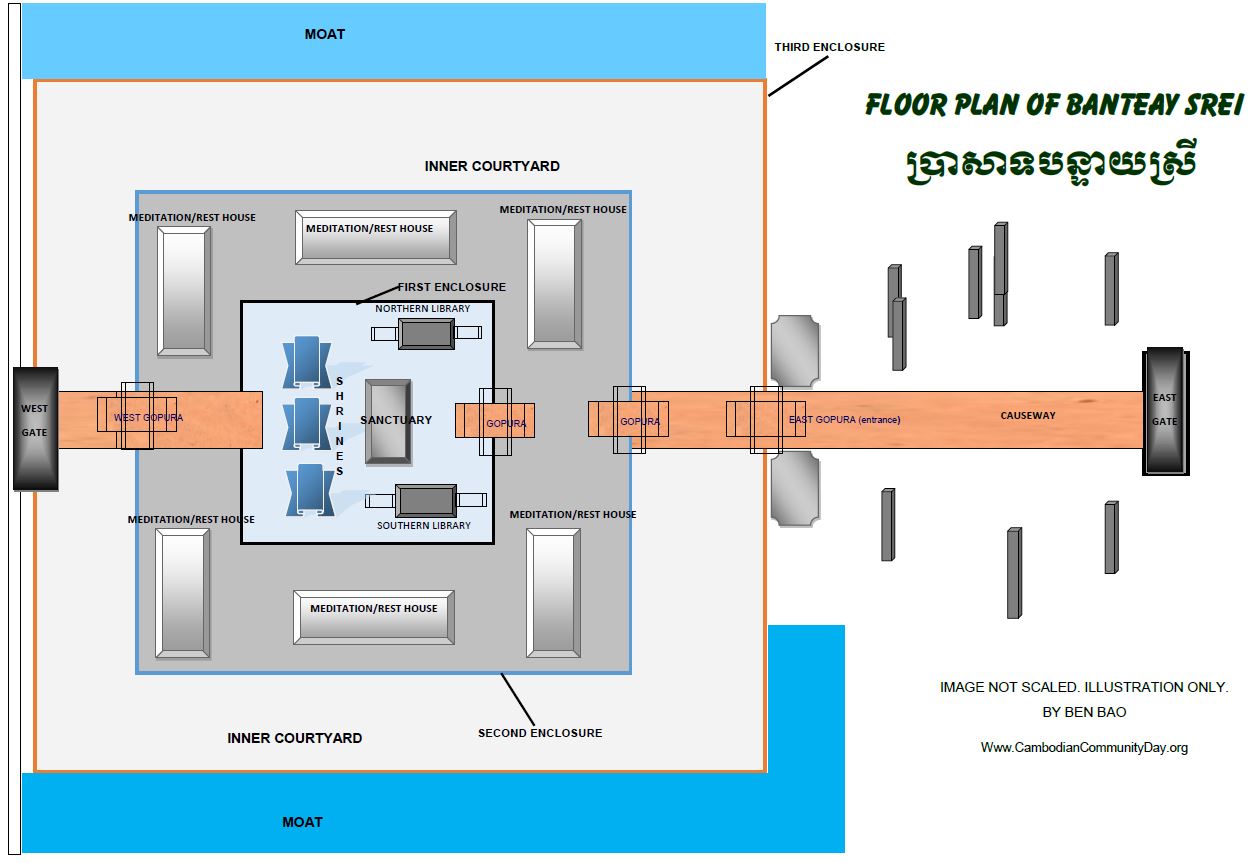
Foundation
The temple is square and has entrances at the east and the west, although visitors will enter the compound from the east, followed by a central east-west axis serving as a causeway. Each side is decorated with many galleries, some are ruins, only pillars left. The south area is devoted to god Shiva and the north to god Vishnu. Banteay Srei was a Khmer innovation rich is style and arts. It was built largely from sandstone, brick and laterite, and is oriented toward east like most Angkorian temples. It has three enclosed walls. Each enclosure has a gopura, an entrance door decorate with fine arts. The outermost enclosure is called third enclosure and the area between the third and second enclosure are courtyard decorated with art works that are now ruins. Part of the second enclosure walls are collapsed. The most interesting parts of the compound is the inner enclosure (the first enclosure). There are three main towers serving as a shrine. Each of the tower has a stairway leading to the main platform decorated with many statutes of human body and animal head. A main sanctuary is in front of the shrines. The first enclosure also has one library in the north and another in the south. There remains of many rest houses of all corners, north and south. They may have been used as a meditation center.

Jewels of Khmer Arts
Banteay Srei is famous in its fascinated classic carvings that include women wearing traditional skirts holding lotus flowers. The carvings also depict a breathtaking re-creations of scenes from the epic Ramayana adorning the library pediments. Many lintels were beautifully carved resembling the art of Preah Ko style in 9th century. There are also many carvings of devada (angel) on the wall of Banteay Srei. Other decorative carvings include kala (a toothy monster symbolic of time), the guardian dvarapala (an armed protector of the temple) and devada (demi-goddess), and the false door. Because of its charm, an Angkor scholar Maurice Glaize resembles the artworks to the works of goldsmith or wood carver rather than a sculpture in stone. Whatever it is, almost every inches of the interior building is covered with decorative carvings.
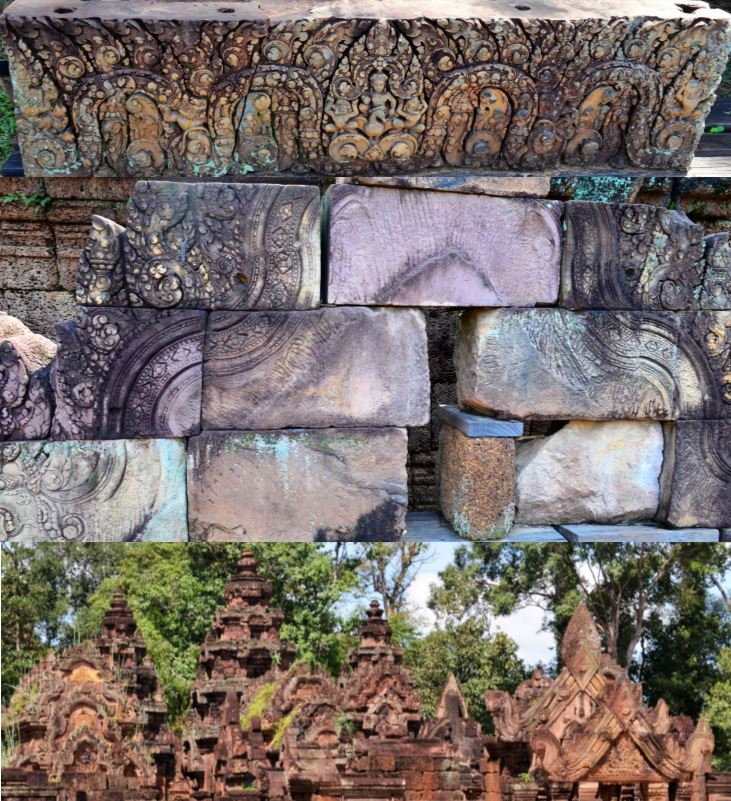
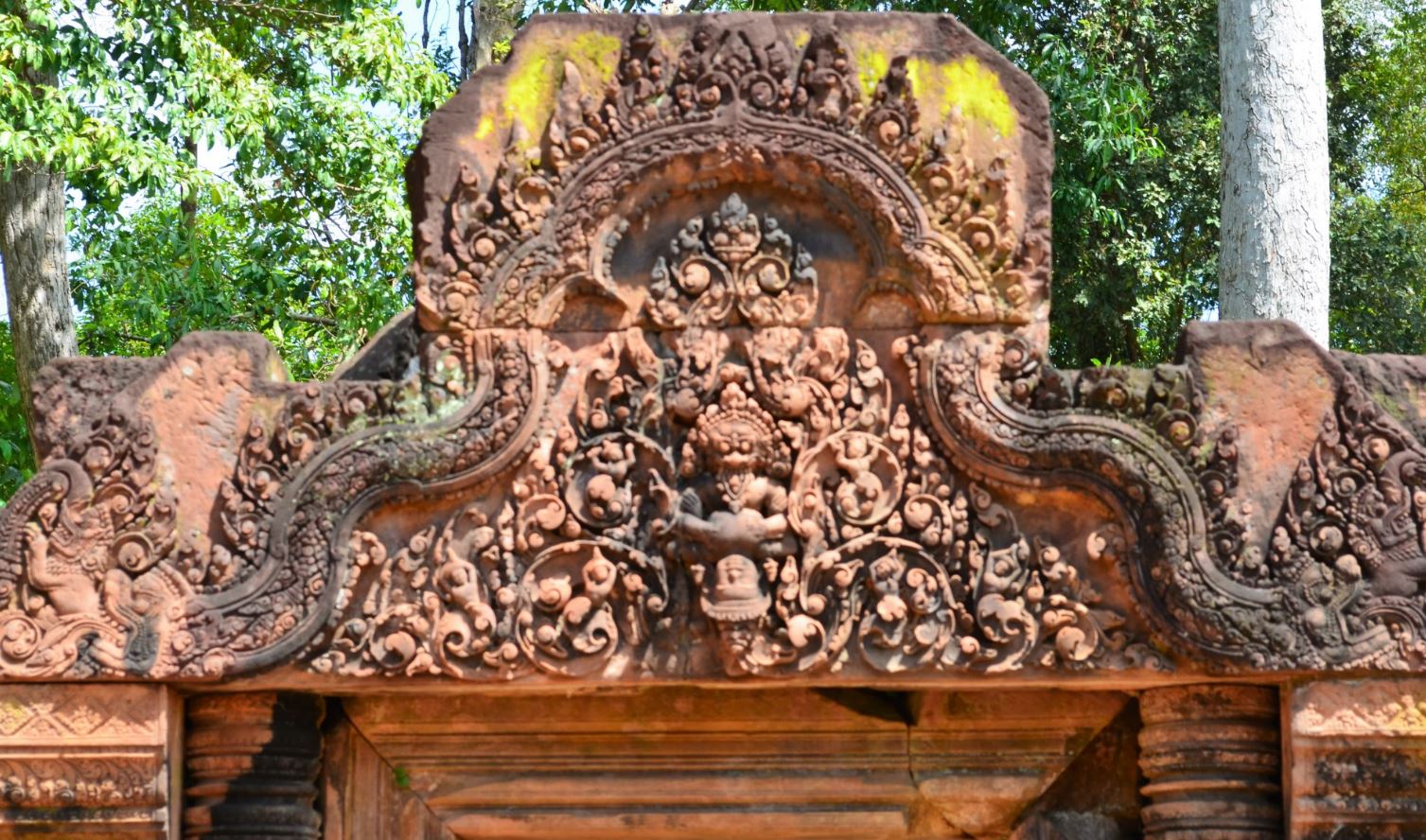
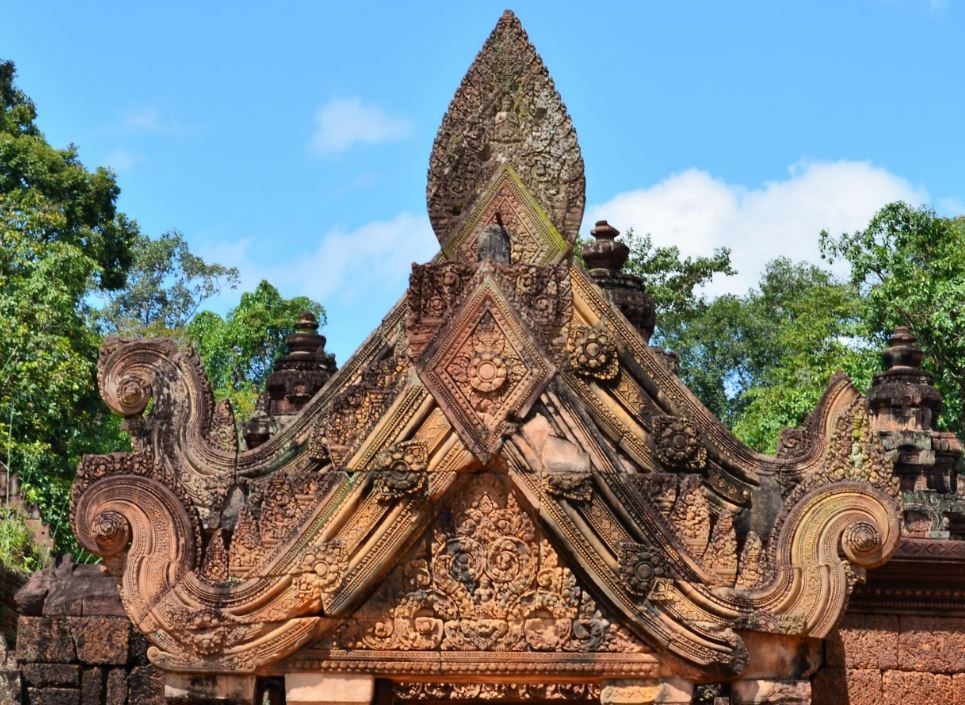
Enclosure and Gopura
The site consists of three concentric rectangular enclosures, the outermost is referred to as the third enclosure, the middle one is the second enclosure, and the inner one is the first enclosure consisting of an entrance chamber and three towers, as well as two buildings conventionally referred to as libraries. The outermost east gate (referred to as a gopura) is entrance to the third enclosure. An causeway situated in the middle of the compound on an east-west axis that leads to all three enclosures. The outer wall is measured up to 500 meter squares, some portions are collapsed.
The third enclosure is measured 95 by 110 meters and is surrounded by a laterite wall and has two gopuras at the eastern and western sides.
The second enclosure walls is measuring up 38 by 42 meters, with gopuras at the eastern and western ends. The western gopura features an interesting bas relief carvings. The inner enclosure wall has collapsed. Only a gopura at the eastern end and a brick shrine at the western remain.
The inner compound is the first enclosure consists of buildings: libraries in the south-east and north-east corners; a sanctuary on a T-shaped platform 0.9 meters high connected to three towers referred as a shrine, the center one is the tallest. The inner enclosure is the most successful restoration of the site. It is now open to the public.
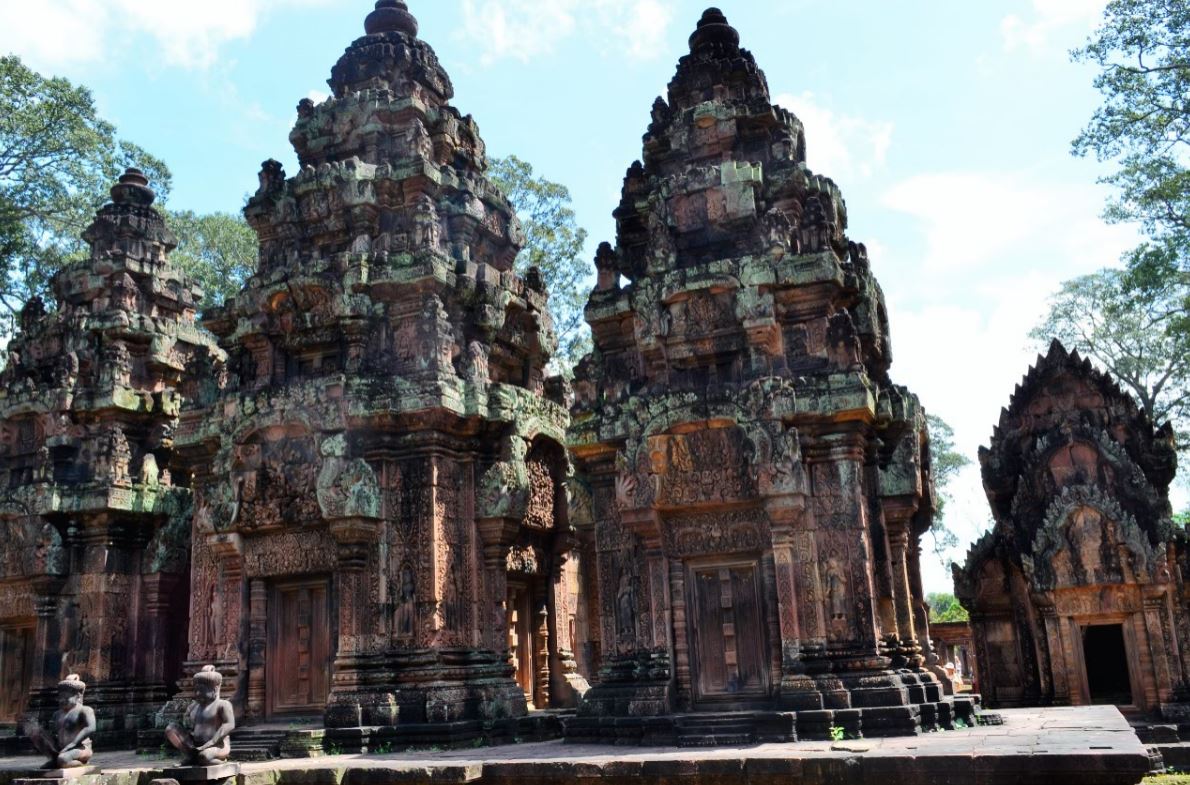
Libraries
The two libraries are of brick, laterite and sandstone with intricate reliefs carving of red colored stone.
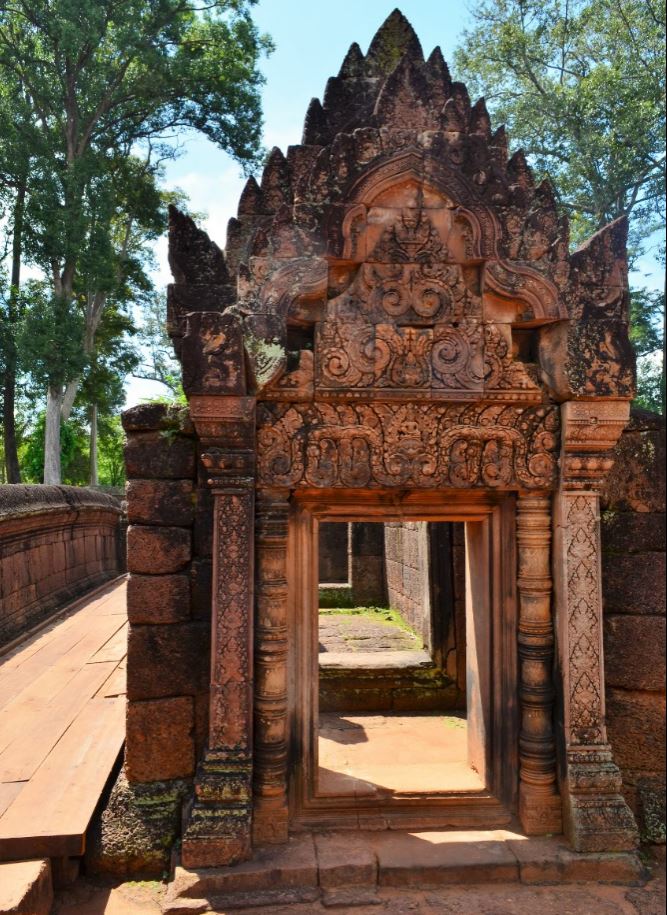
Sanctuary
The sanctuary is also of brick, laterite and sandstone and has brick roof. There is a short corridor leading to three towers to the west: the central tower is the tallest, at 9.8 m.
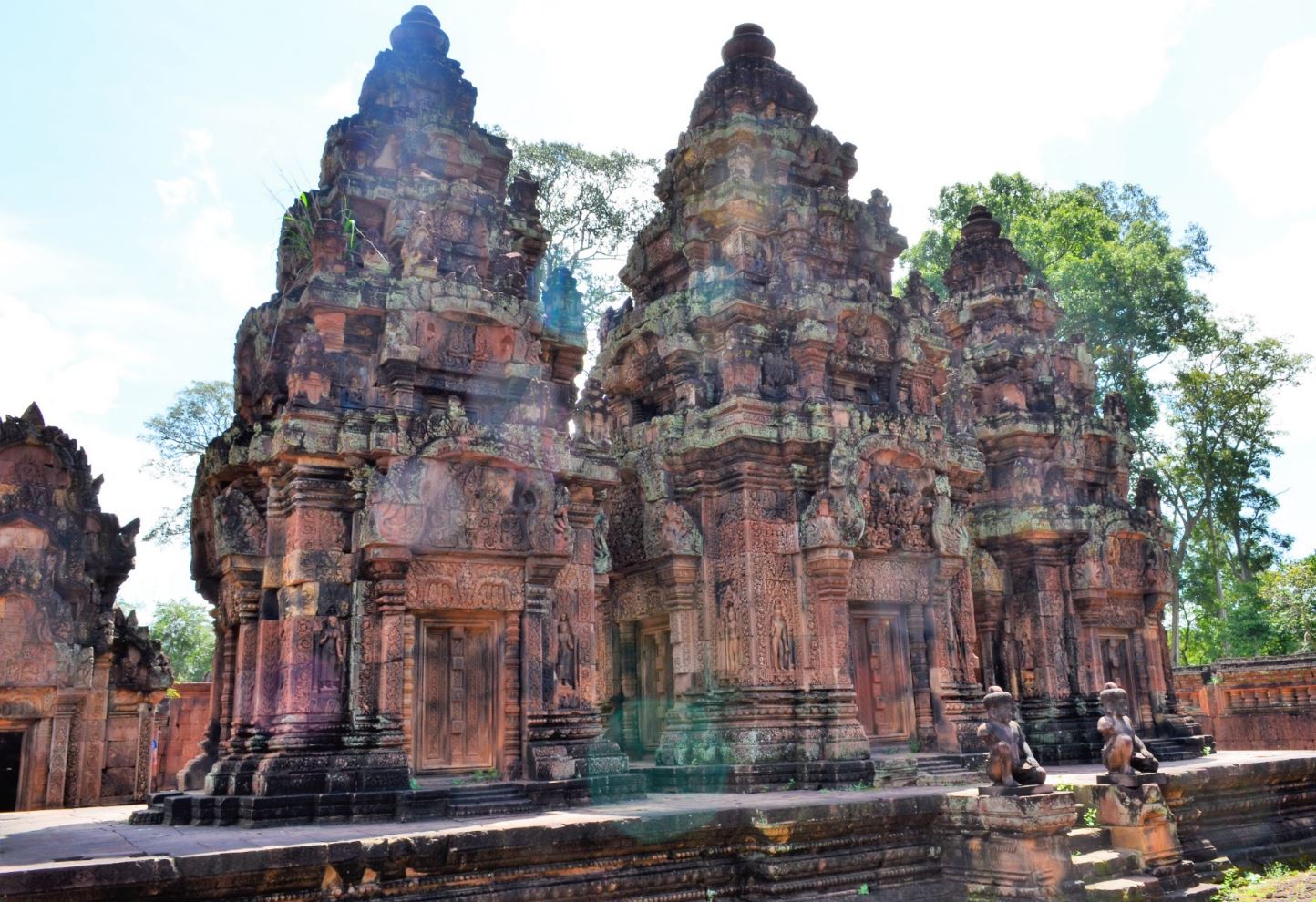
Photo Gallery
Sources:
https://en.wikipedia.org/wiki/Banteay_Srei
http://www.sacred-destinations.com/cambodia/angkor-banteay-srei
http://www.lonelyplanet.com/cambodia/temples-of-angkor/sights/religious/banteay-srei
http://www.canbypublications.com/siemreap/temples/temp-bansrey.htm
http://www.tourismcambodia.com/attractions/angkor/banteay-srei.htm
Photo by Ben Bao


